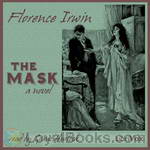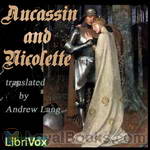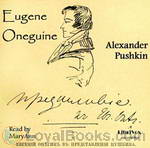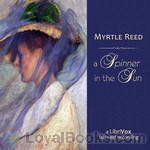|
Books Should Be Free Loyal Books Free Public Domain Audiobooks & eBook Downloads |
|
|
Books Should Be Free Loyal Books Free Public Domain Audiobooks & eBook Downloads |
|
Romance Novels |
|---|
|
Book type:
Sort by:
View by:
|
By: Justin McCarthy (1830-1912) | |
|---|---|
 Red Diamonds
Red Diamonds
In the South African wilderness, six men got together to mine for diamonds and become very rich. They agree that the wealth is to be split equally between them or their heirs after a few years and that the share of any one who died without leaving an heir or whose heir died before the time would be split between the remaining partners. Soon, all heirs are notified and wait expectantly for the first of January, on which the diamonds are to be divided between the partners. However, the diamonds are becoming increasingly blood stained, and January the first is still some time off... | |
By: Neil Munro (1863-1930) | |
|---|---|
 Doom Castle
Doom Castle
Doom Castle is the story of young Count Victor's journey to Scotland after the Jacobite Rebellion, searching for a traitor to the Jacobite cause as well as a mysterious man under the name of "Drimdarroch", whom he swore revenge. After a perilious journey, Count Victor arrives at Doom Castle as a guest of the enigmatic Baron of Doom, his two strange servitors and his beautiful daughter... (Summary by Carolin) | |
By: Miriam Michelson (1870-1942) | |
|---|---|
 A Yellow Journalist
A Yellow Journalist
Rhoda Massey is a young, sharp reporter for a daily newspaper in San Francisco. After proving herself an astute and fearless investigator on her first big story, she spends most of her waking hours running down leads and doing (almost) anything it takes to produce headline grabbing tales and to be the first one to do so. She must compete with her male colleagues where she works but also with those from other newspapers. Rhoda discovers it useful to be pretty and small in stature (great for eavesdropping from tight and unusual locations) but it's her shrewd mind and her nose for news that propel her to pursue stories in dangerous places and, sometimes, from dangerous characters... | |
By: Thomas Hardy (1840-1928) | |
|---|---|
 The Well-Beloved
The Well-Beloved
'The Well-Beloved' tells the story of Jocelyn Pierston and his love for three generations of women - the grandmother, her daughter and grand-daughter over a period of forty years. Pierston is seeking for perfection in his choice of lover and in doing so lets opportunities for happiness pass him by. However, at the end of his life, he finds some kind of contentment in compromise. | |
By: Dorothy Canfield Fisher (1879-1958) | |
|---|---|
 The Bent Twig
The Bent Twig
Semi-autobiographical series of incidents in the life of an intellectual American family in the late 19th - early 20th Century as seen by favored daughter, Sylvia Marshall. Her father is an economics professor in a Midwestern state university and she is following in his inquisitive footsteps. Canfield writes this in a matter-of-fact manner with Tarkingtonesque good humor. | |
By: George Sand (1804-1876) | |
|---|---|
 Indiana
Indiana
This is George Sand's first novel. Her real name was Amantine (or Amandine) Lucile Dupin, and she later became baroness Dudevant. As an aristocratic woman living in 19th century France, she chose her first novel to be, above all, a realistic work. Indiana is trapped since the age of 16 in a loveless marriage with a rich, much older, man. Her only real friend is her cousin, sir Ralph, who, sometimes, just does things which are- logically- the best for her but- mentally- the worsed he could do. She tries to find means of escape. But would she be able to recreate her own reality? Can a woman find true love while trying to maintain her identity and independence in a man's world?" | |
By: Florence Morse Kingsley (1859-1937) | |
|---|---|
 And So They Were Married
And So They Were Married
This is the story of Elizabeth North a young woman who becomes engaged and with the aid of a social climbing friend begins to plan her wedding beyond what she can afford. Her friend Evelyn Tripp, convinces Elizabeth that she “simply can’t afford” not to live a fashionable and expensive lifestyle. However her husband and her grandma help her to see sense and pull herself out of the debt she has got herself into. | |
By: Henry Rider Haggard (1856-1925) | |
|---|---|
 Pearl Maiden
Pearl Maiden
This is the story of Miriam, an orphan Christian woman living in Rome in the first century. She falls in love with a Roman officer, but knows that her Jewish childhood playmate loves her too and will do anything in order to get her love in return. | |
By: Booth Tarkington (1869-1946) | |
|---|---|
 Monsieur Beaucaire
Monsieur Beaucaire
A madcap Frenchman posing as an ambassador's barber blackmails a dishonest duke to introduce him as a nobleman to a wealthy belle of Bath. Since the duke himself hopes to mend his fortunes by wedding this very woman, he attempts to murder Beaucaire, and failing that to discredit him. To test the lady's mettle, Beaucaire allows his deception to be exposed--up to a point--and there we must draw the curtain to preserve the surprise ending. ( | |
By: Eliza Haywood (1693-1756) | |
|---|---|
 The History of Miss Betsy Thoughtless, Volume 1
The History of Miss Betsy Thoughtless, Volume 1
The flirtations of a rich young maiden, Miss Betsy Thoughtless with several suitors, as she alienates the right man by refusing to take the issue of marriage seriously. Because of this her guardian commits her to marriage to the wrong man, a situation over which she has little control. As the heroine describes her fate, this text exposes the institution of marriage, the powerlessness of women and the double standards held during that time.(Introduction by Joyce Martin) | |
By: Sheikh Nefzaoui | |
|---|---|
 The Perfumed Garden
The Perfumed Garden
A fifteenth-century Arabic sex manual and work of erotic literature. The book presents opinions on what qualities men and women should have to be attractive, gives advice on sexual technique, warnings about sexual health, and recipes to remedy sexual maladies. It gives lists of names for the penis and vagina, has a section on the interpretation of dreams, and briefly describes sex among animals. Interspersed with these there are a number of stories which are intended to give context and amusement. | |
By: Florence Irwin (1869-19??) | |
|---|---|
 The Mask
The Mask
The mask is the one which we all wear, even though unconsciously, to hide our thoughts and feelings. Alison Terry wore one, though she had never realized it until she faced a crisis in her life. Alison, a girl of sympathetic mood and action whose keen intelligence is overbalanced by the inexperience of innocence and a sheltered upbringing, goes to New York with her erratic husband, Phil Howland. She passes through various stages of disillusionment inevitably resulting from cheap boarding-house life,... | |
By: Harold Bindloss (1866-1945) | |
|---|---|
 Northwest!
Northwest!
Northwest! takes place in western Canada, primarily western Alberta and British Columbia. The story revolves around Jimmy not being sure whether or not he shot and killed a Northwest Mounted while he and some friends were out hunting one day. Not exactly a bushman, he needs to head northwest to avoid capture by the officials who are out to find him and bring him to trial. At least that's what he suspects. Survival in the wilderness for one who was raised in British class proves to be a daunting experience, and we learn of the trials he is to be put through while he is on the lam. | |
By: A. S. M. Hutchinson (1879-1971) | |
|---|---|
 If Winter Comes
If Winter Comes
If Winter Comes, was in many aspects ahead of its time, dealing with an unhappy marriage, eventual divorce, and an unwed mother who commits suicide. According to the New York Times, "If Winter Comes" was the best-selling book in the United States for all of 1922. | |
By: Francis William Bourdillon (1844-1912) | |
|---|---|
 Aucassin and Nicolette.
Aucassin and Nicolette.
Aucassin and Nicolette is a medieval romance written in a combination of prose and verse called a “song-story.” Created probably in the early 13th century by an unknown French author, the work deals with the love between the son of a count and a Saracen slave girl who has been converted to Christianity and adopted by a viscount. Since Aucassin’s father is strongly opposed to their marriage, the two lovers must endure imprisonment, flight, separation in foreign lands, and many other ordeals before their ardent love and fierce determination finally bring them back together... | |
By: L. G. Moberly (1861-1931) | |
|---|---|
 Christina
Christina
Christina is a story of two people: Christina, a strong young and poor woman, who searches for work and finds more than she bargained for, and Rupert, a middle class man, who is pressured to marry and settle down. These two people meet frequently and start to confide in each other. But can they really help one another put their wounds from the past to rest and start a new life? And will their new life include one another? Lucy Gertrude Moberly was an English popular novelist whose wonderful writing style deserves attention. | |
By: Ossip Schubin (1854-1934) | |
|---|---|
 Our Own Set
Our Own Set
The Austrian nobility in Rome forms a very close circle, into which only those of high rank and wealth are admitted. They managed to get along with Cecil Sterzl, who, although not one of their own, is regarded as quite an amiable man. However, when he brings his younger sister Zinka into that circle, she is received very coldly at first, if at all. And when, with her fresh and unaffected manners, she wins one heart after another, especially that of the handsome Count Sempaly, she also excites jealousy and contempt in many members of that "set"... | |
By: Alexander Pushkin (1799-1837) | |
|---|---|
 Eugene Onéguine
Eugene Onéguine
Eugene Onéguine is a classic of Russian literature, and its eponymous protagonist has served as the model for a number of Russian literary heroes (so-called superfluous men). It was published in serial form between 1825 and 1832. The first complete edition was published in 1833, and the currently accepted version is based on the 1837 publication.Almost the entire work is made up of 389 stanzas of iambic tetrameter with the unusual rhyme scheme "AbAbCCddEffEgg", where the uppercase letters represent feminine rhymes while the lowercase letters represent masculine rhymes... | |
By: Myrtle Reed (1874-1911) | |
|---|---|
 A Spinner in the Sun (dramatic reading)
A Spinner in the Sun (dramatic reading)
Myrtle Reed may always be depended upon to write a story in which poetry, charm, tenderness and humor are combined into a clever and entertaining book. Her characters are delightful and she always displays a quaint humor of expression and a quiet feeling of pathos which give a touch of active realism to all her writings. In "A Spinner in the Sun" she tells an old-fashioned love story, of a veiled lady who lives in solitude and whose features her neighbors have never seen. There is a mystery at the heart of the book that throws over it the glamour of romance. | |
By: Amanda McKittrick Ros (1860-1939) | |
|---|---|
 Irene Iddesleigh
Irene Iddesleigh
Amanda McKittrick Ros, a Northern Irish writer, did for the novel what William McGonagall did for poetry and Florence Foster Jenkins for the coloratura voice. She published a number of novels (all at her own expense) and in addition to being a novelist was a poet, her best known being 'Visiting Westminster Abbey' which beginsHoly Moses!Take a look!Flesh decayed in every nook!Some rare bits of brain lie here,Mortal loads of beef and beer.C.S. Lewis, J.R. Tolkien and The Inklings were admirers and held competitions to see who could read her work for the longest time whist keeping a straight face... | |
By: William John Locke (1863-1930) | |
|---|---|
 The Fortunate Youth
The Fortunate Youth
Paul is a poor boy who grew up in London, in the household of his mother and stepfather. His journey to greatness is the subject of our story. But his desired success comes at a very high price. | |
By: George Eggleston and Dolores Marbourg | |
|---|---|
 Juggernaut: A Veiled Record
Juggernaut: A Veiled Record
Edgar Braine was consistently successful at all he set out to accomplish. He went through life with goals and worked diligently and with ethical purity in reaching those goals, from becoming editor of the local newspaper on up to his political aspirations. That was how his mother, in her waning years, had advised him to reach his goals, and Edgar was determined to honor her advice. There was one caveat in his mothers advice however, and it is for Edgar to determine exactly what she meant by it. Is success measured by the interactions between business, politics, and marriage? | |
By: Charles Major (1856-1913) | |
|---|---|
 When Knighthood Was in Flower
When Knighthood Was in Flower
Set during the Tudor period of English history, When Knighthood Was in Flower tells the tribulations of Mary Tudor, a younger sister of Henry VIII of England who has fallen in love with a commoner. However, for political reasons, King Henry has arranged for her to wed King Louis XII of France and demands his sister put the House of Tudor first, threatening, "You will marry France and I will give you a wedding present – Charles Brandon's head!" | |
By: Alessandro Manzoni (1785-1873) | |
|---|---|
 Betrothed (I Promessi Sposi)
Betrothed (I Promessi Sposi)
The Betrothed (I Promessi Sposi) presents a kaleidoscope of individual stories, which are all tied together by the story of Lucia and Renzo, two young persons of humble origin that are deeply in love with one another. However, despite their great attachment, they are prevented from marrying by the cruel Don Rodrigo, who has himself cast an eye on the beautiful and pious Lucia. Don Rodrigo menaces the priest who was to perform the wedding ceremony, who then refuses to do his duty. Thus threatened and prevented from being married, the couple is separated, and the narration follows each of them on their struggle to unite again... | |
By: John Jeffery Farnol (1878-1952) | |
|---|---|
 Broad Highway
Broad Highway
Our hero, Peter Vibart, an Oxford graduate with no means of support but for 10 guineas he has inherited, sets out on a walking tour of the Kent countryside. Along the way, he meets many quaint and adoring characters as well as a few ne’er-do-wells, meets with several disasters and triumphs, and eventually he meets "The Woman," who leads him to even more disasters and triumphs. (Introduction by John Lieder)Proof-listened by Dawn Larsen and BainbridgeCatherine. | |
By: George Eliot (1819-1880) | |
|---|---|
 Felix Holt, The Radical
Felix Holt, The Radical
"Harold Transome is a landowner who goes against his family's political tradition (much to his mother's distress), while Felix Holt is a sincere radical. The setting of the book, the 1832 parliament election, is used to discuss the social problems of that time. A secondary plot involves Esther Lyon, the stepdaughter of a minister who is the real heiress to the Transome estate, with whom both Harold Transome and Felix Holt fall in love. Esther loves poor Felix Holt, but would she choose a comfortable life with Harold Transome?" | |
By: George Gascoigne (1535-1577) | |
|---|---|
 Adventures of Master F.J.
Adventures of Master F.J.
This story presents through letters, poems and third-person commentary the love affair between a young man named Freeman Jones and a married woman named Elinor, lady of the castle he is visiting in Scotland. Events in the affair are traced from initial attraction through seduction to (somewhat) graphic sexual encounters and their aftermath. (Allegedly based on a real-life scandal, the author, in re-issuing his story two years later, transplanted the action to Italy, renaming the principals Fernando Jeronimi and Leonora.) | |
By: Mary Elizabeth Braddon (1835-1915) | |
|---|---|
 Vixen
Vixen
This is an exquisite and heartbreaking love story. Violet Tempest and Roderick Vawdrey, otherwise known to each other as Vixen and Rorie, are childhood sweethearts. However, Rorie's family wants him to marry elsewhere. You may think it is the old story all over again, but nothing in this novel is what it seems. It is far too realistic for that. Many books talk about falling in love. This book starts after that stage, and speaks about the harder stage of a relationship: loving earnestly but understanding that love - even in the truest and purest sense - is not everything in life... | |
By: Rosa Campbell Praed (1852-1935) | |
|---|---|
 Rebel Rose
Rebel Rose
The Rebel Rose is the story of Mary Stuart Beaton, a descendant of Mary Queen of Scots who has come to London in the hope of having her family claims legitimized. The Pretendress -- as she is called, finds herself caught up in the devices of her own personal guardians as well as a scheming London society woman scorned by a powerful member of Parliament who has become an admirer of the Princess. Apart from the claims of royalty, Mary Beaton knows where her worth is found and she proves to be a formidable opponent for all those scheming for and against her. | |
By: Benjamin Disraeli (1804-1881) | |
|---|---|
 Sybil, or the Two Nations
Sybil, or the Two Nations
Sybil is one of the most prominent political novels of the mid-nineteenth century, taking as its subject the "condition of England" question. That phrase was first used by Thomas Carlyle in an essay of 1839 on Chartism, a working-class protest movement that plays a prominent role in this novel. The two nations are the rich and the poor, and the increasing gulf between them, and their condition also inspired such writers as Charles Dickens and Mrs. Gaskell, among others (one of whom, Friederich Engels, was the disciple of Karl Marx, and in his The Condition of the Working Class in England in 1844 described the appalling effects of the industrial revolution a year before Sybil appeared)... | |
By: Arthur W. Marchmont (1852-1923) | |
|---|---|
 Dash for a Throne
Dash for a Throne
The young Count von Rudloff got himself into so much trouble with the Imperial Family in Berlin, that he sees no other way out of it than to fake his own death. Stumbling through different identities, he finally assumes - quite against his will - the identity of the Prince von Gramberg. At Gramberg Castle, he finds a web of intrigue, which threatens the safety of the young and beautiful Countess Minna. The Count von Rudloff decides to save the girl, but the intrigue is more complicated than it first appeared, and there are old enemies who are still waiting for their revenge... | |
By: George Bernard Shaw (1856-1950) | |
|---|---|
 Widowers' Houses
Widowers' Houses
This is one of three plays Shaw published as Plays Unpleasant in 1898; they were termed "unpleasant" because they were intended, not to entertain their audiences—as traditional Victorian theatre was expected to—but to raise awareness of social problems and to censure exploitation of the laboring class by the unproductive rich. In this play, Dr. Harry Trench becomes disillusioned when he discovers how his fiancee's father, Mr. Sartorius, makes his money. However, it is soon revealed that Trench's own income is far from untainted. | |